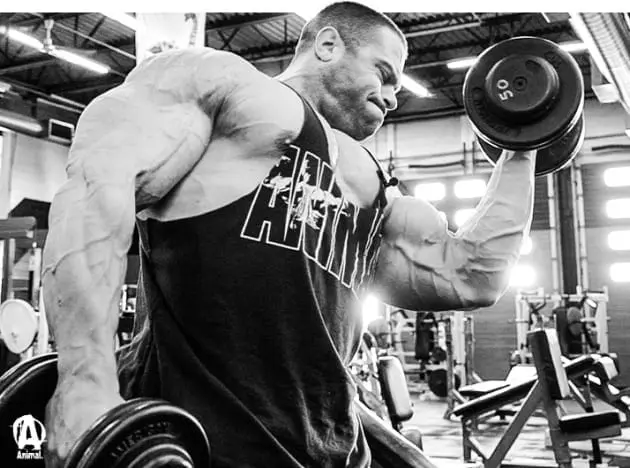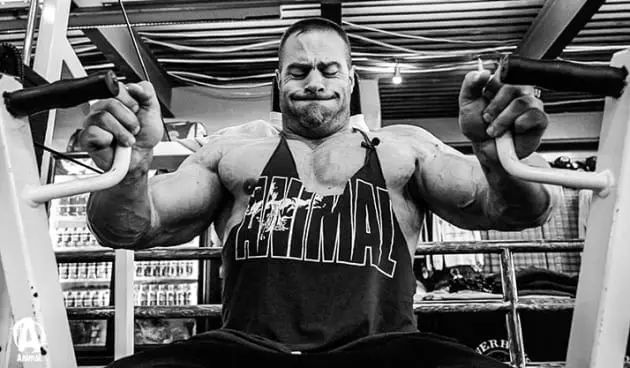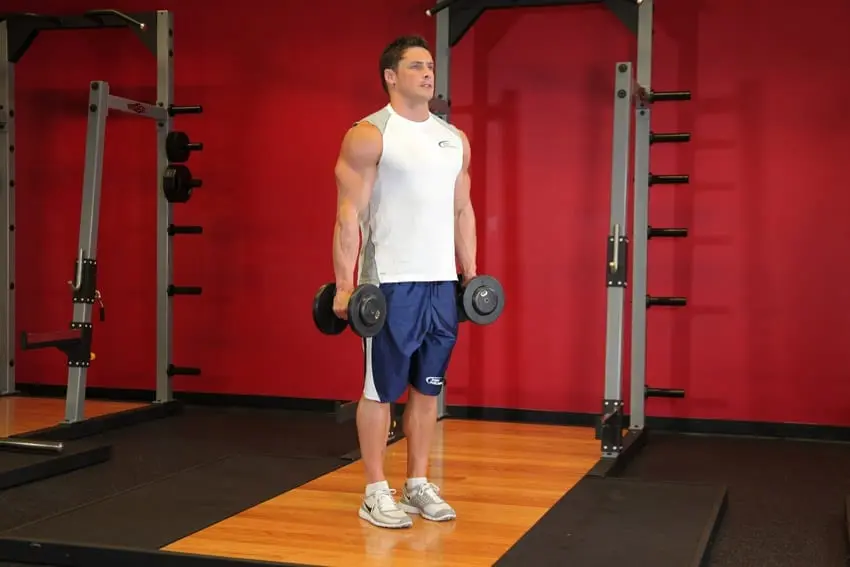Contents
There is no place for randomness in bodybuilding training. Find out how IFBB Pro Evan Centopani is building and start using his recommendations this week!
Author: Evan Centopani
You have to train 10 muscle groups: chest, back, quads, hamstrings, calves, shoulders, biceps, triceps, forearms and abs. In what sequence should you work with them so that even after the most exhausting sessions the muscles have enough time for?
You have tons of options. You can set aside a day for the upper body and a day for the lower body. You can select a separate workout for each part of the body. Or spread your chest, back and legs on different days, and then include the remaining muscle groups in these workouts as you see fit. In my case, the last option turned out to be the most productive.
Each of us strives to improve efficiency, and we need a split that will allow us to confidently move forward. To progress, we must train, that’s understandable. The question is how often to work out a muscle group, with what training volume and with what intensity. What growth stimulus will be most effective, and how long will it take to recover from this stimulus? Everyone has their own answer.
Want to lose muscle? Train the same muscle group for hours, day after day, seven days a week. Looking to build muscle? Change your target groups every day, create an overload that’s enough to stimulate adaptive responses, and then give your muscles plenty of time to recover. Of course, other factors such as diet and individual metabolic characteristics are also extremely important, but today we are talking exclusively about training. I will also proceed from the assumption that your goal is to gain muscle mass.
And now about how I choose the optimal load for the muscles – feasible and sufficient to boost growth.
Hard to learn
As a teenager, I took up training too zealously: I loaded each part of the body twice a week and did all the exercises that exist in nature for each muscle group. When you don’t know for sure what to do, you try to do everything at once in an attempt to find the right path by touch. Something like a trial and error method, when you do not know which of your actions will bring the desired results. This is exactly what I did.
At the age of 15, I lifted weights for three hours a day, and that was the order of the day. I tried to do as many sets of each muscle group as possible in every exercise I knew. On a typical day, I worked three target muscle groups.
It didn’t take long before I realized that my actions did not make much sense. Due to wild fatigue, I could not work out the muscle groups that went at the end of the workout. The enthusiasm also gradually faded away, but the decisive factor was the fact that I was losing strength and not gaining a single gram of muscle mass!

I decided to cut back on the number of exercises and sets for each muscle group. Keeping the basic training structure in mind, I began to focus on working to the limit and continually improving on previous results. However, within the framework of one workout, I still could not give the maximum load to those muscles that I was working out at the end of the session. It wasn’t until I decided to train each of the large muscle groups once a week that I began to notice progress in strength and muscle development. Although I’ve been told a hundred times that overzealousness can be counterproductive, I’ve had to learn a lesson from my own experience.
The golden key to recovery
Along with experience came the understanding that certain muscle groups need to be trained more intensively, and they need more time for. For example, in exercises for the chest, back and legs, such as heavy presses, and deadlifts, you have to leave all your strength, otherwise there will be no sense. I realized that it makes sense to form a split around these three muscle groups, never work them on the same day, and try not to train them for two days in a row.
I could train my chest on Monday and my legs on Tuesday, and both workouts were productive, but if I trained my legs on Monday, Tuesday’s chest workout suffered. I changed the structure of the training process so as not to do exercises for two large muscle groups on the same day, and if I planned to add other muscles to the workout, these were small groups. For example, the inclusion of biceps or biceps in the chest workout gave a good result. I could start or end a workout with the press, give the maximum load to the chest muscles, and still have enough fuel for the biceps in the tanks. To be honest, pumping my arms has always been quite easy for me, so combining them with a chest workout worked with a bang.
Why not set aside a special day for your hands? I used to do this, but the result was a disproportionate development of the arms in relation to other muscles. Plus, I wasted a day that could have been dedicated to the part of my body that really needed a separate workout. Or simply relax and recover.

A lesson for the (presumably) lay reader to learn: When designing your workout routine, consider which muscle groups require more attention and more recovery time. If you train three muscle groups on the same day, each will get slightly less attention. By analogy, if you choose to train Monday through Friday, chances are good that you will start in good health, and by Friday you will be barely dragging your feet.
I can train for three days in a row, this is my maximum, after which I definitely need to rest. I currently train four times a week. This allows me to get a rest day before and after each workout, with the exception of Friday and Saturday sessions. It also gives me the opportunity to dilute muscle groups so that there is enough growth stimulus and time to rest. And I don’t have to spend my whole life in the gym.
The reasoning behind my split
My training program now looks like this:
- Sunday: recreation
- Monday: back and calf muscles
- Tuesday: recreation
- Saturday: quads and hamstrings
- Thursday: recreation
- Friday: chest, abs and biceps
- Saturday: deltas and triceps
This split generates adequate stimulation for each part of the body, and just four workouts leave more time for recovery. But this is just a general picture, let’s talk about the reasons for my choice:
- Rest day before and after back and legs. The two largest muscle masses require the most intense workout. If you train them properly, it will be difficult to recover.
- Rest day before chest workout. Chest is one of my weaknesses. I have to be strong enough to work it through properly.
- Biceps and abs are included in the chest workout. Chest workouts are not too difficult for the nervous system, and neither biceps nor abs require titanic efforts from you. Train your biceps after your chest, not your triceps, as they are fresh and not fatigued by pectoral exercises.
- Shoulders and triceps the day after the chest. This may sound strange, but for good reason. If I take another day off, I end up in an 8 day training cycle that annoys me. I prefer the order and predictability of seven days. In addition, if I trained the chest after the shoulder girdle, I would noticeably lose in efficiency, because the chest belongs to large muscle groups.

From my own experience, I know that it is better to train large muscle masses before small ones. Although triceps are involved in shoulder presses, this involvement is not that significant and you can work them out with maximum effort after training the shoulder girdle.
Rules for making your split:
- Train your chest, back, and legs on separate days separated by rest days.
- Start your workout with a large muscle group.
- Do not overload the muscles that will be involved in the next workout. Example: Don’t train your triceps or shoulders the day before your chest workout.
- Train as often as possible, as long as it doesn’t interfere with your full recovery.
- Work each muscle group once a week, don’t double the frequency.
- Optimize your workouts. Try to get the job done faster and with fewer sets.
- Don’t forget about overloading!

Abs / Chest / Biceps Workout by Evan Centopani

3 approach to 10 repetitions

3 approach to 10 repetitions

3 approach to 10 repetitions

3 approach to 10 repetitions

3 approach to 10 repetitions

3 approach to 10 repetitions
Superset:

3 approach to 10 repetitions

3 approach to 10 repetitions
Superset:

3 approach to 10 repetitions

3 approach to 10 repetitions









